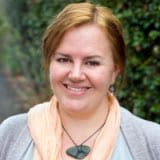SEED projects 2017 – Writing, Writing Everywhere
Narrative medicine and critical reflection through poetry and art
Dr Tanisha Jowsey (Faculty of Medical and Health Sciences)
This project aimed to create a published book of collective works showcasing narrative medicine through University of Auckland medical students’ poetry and images.
As part of the medical curriculum, students need to prepare reflective portfolios. They are required to prepare ‘evidence’ of their critical reflection for each of the five themes included in the domain, one of which is ‘Professionalism and reflective practice’. One element upon which the portfolios are assessed is creativity and engagement. Students have demonstrated high levels of creativity and engagement through various mediums, but most commonly through narrative medicine writing formats (medical fiction, the lay exposition, autobiography, stories from clinical practice) and through images (photographs, paintings and illustrations).
There is a lot of overlap between the current portfolios and narrative medicine. Narrative medicine is a form of reflective writing by clinical students and practitioners. While it can take various forms, at its core is an intention to facilitate critical reflection on clinical practice and to develop empathy between clinical practitioners and their patients, and between the practitioner-writer and the reader. Other commonly-explored areas within narrative medicine include morals, ethics, difficult lived experiences, and tensions between systems and personal beliefs and practices. These areas of exploration are critical to shaping people’s clinical practices of care.
Narrative medicine formats can be presented through poetry and other structured writing forms. We have been impressed by the quality of critical reflection, empathy, and exploration of ethics and morals in many of our students’ works so we decided to create opportunities for these students to be more widely acknowledged for their work.
The idea of a book proved very popular with students and almost of all of those who were invited to publish with us did. For most of them, this was their first publication, so it was very special. We made the whole process fairly easy for them (although hard for us).
